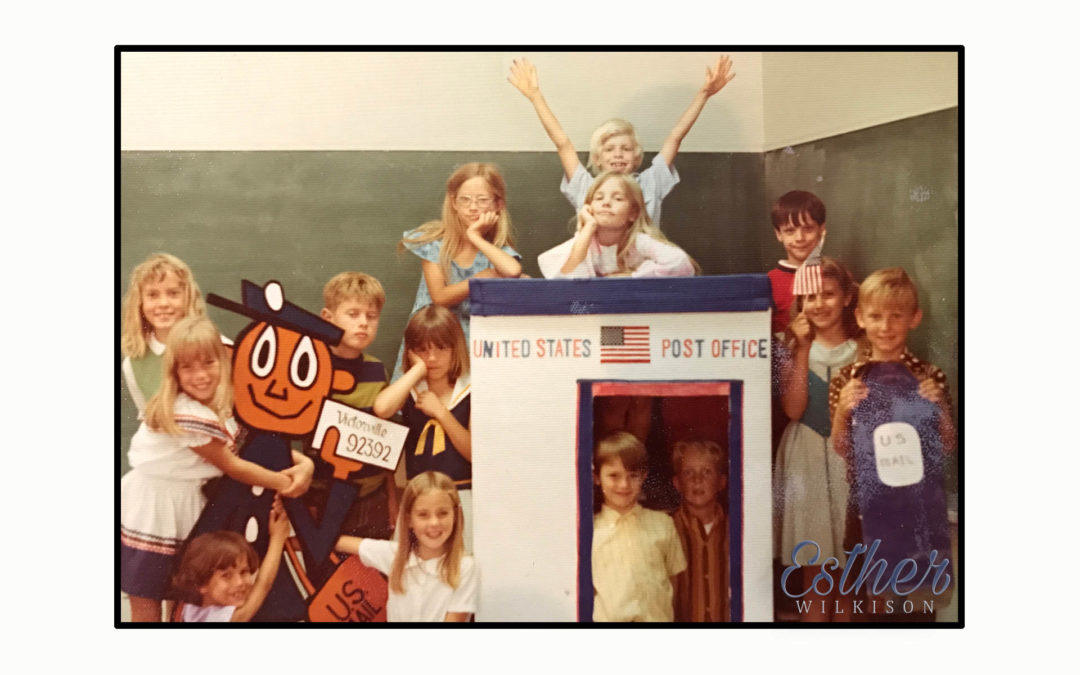My third grade teacher did something amazing. She authorized us to pass notes in class. Not kidding. We could send and receive notes as long as we wrote in letter form with heading, greeting, body, close, and signature.
We also had to put it in an envelope with the full address, return address, and a self-designed stamp. We turned in our completed letters to our in-class post office. Yep. For real! We had a HUGE post office inside our classroom. It was big enough for a student desk inside.
Once a week someone was selected to be postmaster. Being postmaster was one of the most amazing jobs because you got to see who wrote letters and then deliver them to your classmates. My third grade teacher took us to our local post office so we could learn the system our class post office was modeled after.
No doubt, billions of third graders have been taught how to write a letter, but by giving us a way to send and receive letters that was like the real-life system—my teacher taught me the joy of communication. My writing was not something for her to mark errors, add a grade, and return so it could be thrown away. My writing was something to send to someone else who would open it, read the message, and hopefully write back.
Sender. Message. Receiver. That’s what real communication requires. That’s what she gave us. No surprise to me that by junior high I had pen palls all around the world. I had learned the joy of writing and receiving letters. That joy of communicating is why kids (and adults) love to text. We want to send thoughts out and have someone read and respond. Without the receiver it’s hard to work up the energy as a sender to come up with a message.
How could you implement an idea like this? Here are some ideas to consider.
1. Put a mail box on your teacher desk or in an area where you have your homeschool base. Let children write you notes and put the flag up when a letter is inside your box. If they write, write them back! You may find this a marvelous means of developing a connection to disciple them.
2. Whatever you teach—find ways to make it look more like life than like school. Pretending to do something (like be a letter carrier) helps students see the connection between learning now and employment later. Pretending is amazingly effective for learning. (If you don’t believe me—talk to pilots who do simulations to learn their flying skills.)
3. Think through what you want your students to remember from your class or homeschool. If possible, put something dramatic and life-based in or near your school room. What ever it is—a pretend grocery story, a reading boat, a garden—take your class or this year’s family picture near it and give each of them a copy. This tangible image may forever remind each child how you helped prepare him or her for some aspect of life.


0 Comments